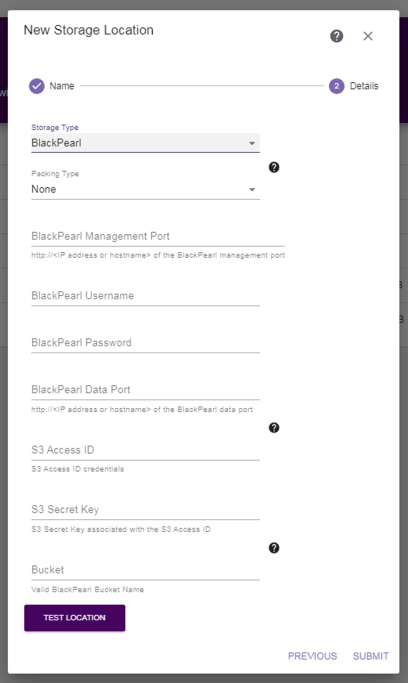If you select the BlackPearl storage type, the dialog box updates to display the following fields:
|
|
|
Figure 35 The New Storage Location dialog box with BlackPearl specific fields. |
